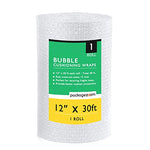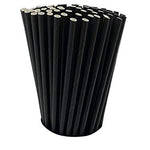You have no items in your shopping cart.
Upcycling, a revolutionary approach to waste management and creativity, has been gaining momentum across the globe. As communities and individuals recognize the importance of environmental sustainability, upcycling has emerged as a powerful solution to reduce waste, conserve resources, and empower local communities. This article delves into the fascinating world of upcycling, exploring its potential to transform trash into treasures while making a positive difference in the lives of people and the planet.
From Trash to Treasure: How Upcycling is Empowering Local Communities
Upcycling, also known as creative reuse, involves transforming discarded or unused items into valuable products with enhanced functionality and aesthetics. The process goes beyond recycling, as it adds value to the materials and prevents them from ending up in landfills or polluting the environment. Here's how upcycling is empowering local communities and driving positive change:
1. Fostering Sustainable Living and Conscious Consumption
Upcycling encourages a shift towards sustainable living by promoting conscious consumption. Instead of constantly buying new products, people are motivated to repurpose items they already possess or purchase upcycled goods, contributing to a circular economy that minimizes waste.
2. Providing Economic Opportunities to Local Artisans
Local artisans and craftsmen play a vital role in the upcycling movement. By transforming waste materials into unique and valuable products, they can generate income and support their families. This economic boost leads to stronger and more resilient local communities.
3. Encouraging Innovation and Creativity
Upcycling fuels innovation and creativity, as it challenges individuals to think outside the box and find innovative ways to repurpose materials. It inspires artists, designers, and DIY enthusiasts to create stunning and functional pieces from seemingly mundane objects.
4. Reducing Landfill Waste and Environmental Impact
One of the most significant benefits of upcycling is its potential to reduce landfill waste and the associated environmental impact. By diverting items from landfills, upcycling minimizes greenhouse gas emissions, conserves energy, and protects natural resources.
5. Empowering Marginalized Communities
Upcycling projects often collaborate with marginalized communities, providing them with opportunities to participate in sustainable initiatives. Such projects can address social inequalities by offering training, employment, and support to those who need it most.
6. Enhancing Community Engagement and Awareness
Upcycling initiatives bring communities together, fostering a sense of collective responsibility towards the environment. Collaborative upcycling workshops and events can raise awareness about waste reduction and encourage proactive environmental action.
7. Creating Unique and Personalized Products
Upcycled products have a charm of their own, reflecting the creativity and personality of their makers. Consumers are drawn to the uniqueness of upcycled items, giving rise to a growing market for sustainable and personalized products.
8. Promoting Resourcefulness and DIY Culture
Upcycling celebrates resourcefulness and the do-it-yourself (DIY) culture. It encourages people to explore their creative abilities and find value in seemingly unusable materials.
9. Supporting Social and Environmental Causes
Many upcycling projects align with social and environmental causes, supporting charities or environmental organizations through the sale of upcycled products. This combination of creativity and philanthropy drives positive change.
10. Encouraging Corporate Social Responsibility (CSR)
Businesses are increasingly adopting upcycling as part of their CSR initiatives. By incorporating upcycled materials into their products or packaging, companies can demonstrate their commitment to sustainability and responsible business practices.
11. Reducing the Demand for New Raw Materials
As upcycling gains popularity, there is a reduced demand for new raw materials, which often involve resource-intensive extraction processes. This shift contributes to the conservation of natural resources and minimizes environmental degradation.
12. Cultivating Environmental Stewardship in Youth
Upcycling programs in schools and educational institutions help cultivate a sense of environmental stewardship in the younger generation. By engaging students in upcycling projects, they become more conscious of their consumption habits and the impact of their choices on the environment.
13. Fostering Cross-Cultural Exchange and Collaboration
Upcycling projects can transcend geographical and cultural boundaries, encouraging cross-cultural exchange and collaboration between communities. Shared ideas and techniques lead to even more innovative upcycling practices.
14. Combining Art and Environmental Advocacy
Upcycling showcases the powerful intersection of art and environmental advocacy. It highlights the potential for creative expression to drive meaningful change and inspire others to adopt sustainable practices.
15. From Trash to Fashion: The Rise of Upcycled Fashion
Upcycled fashion has emerged as a prominent trend, with designers repurposing materials like plastic, denim, and old clothing into stylish and eco-friendly garments. The fashion industry is increasingly embracing upcycling as a step towards sustainable fashion.
16. Creating Upcycled Home Décor and Furniture
Upcycled home décor and furniture have gained popularity among eco-conscious consumers. From repurposed pallets to vintage-inspired accessories, upcycled pieces add character and sustainability to living spaces.
17. Upcycling in Architecture and Construction
Even in the realm of architecture and construction, upcycling is making a difference. Builders are exploring innovative ways to incorporate upcycled materials into their projects, creating sustainable and visually stunning structures.
18. The Role of Technology in Upcycling
Technology plays a pivotal role in upcycling, enabling better waste management, efficient recycling processes, and the development of innovative upcycling ideas. Advancements in AI and machine learning can optimize upcycling efforts and make them more effective.
19. Overcoming Challenges in Upcycling Initiatives
While upcycling offers numerous benefits, it also faces challenges such as sourcing appropriate materials, ensuring product quality, and scaling up operations. Addressing these obstacles is essential for the continued growth of upcycling initiatives.
20. Collaborative Upcycling Projects Around the World
From community-led upcycling workshops in developing nations to large-scale upcycling cooperatives in industrialized countries, numerous collaborative projects are making a positive impact worldwide.
21. The Future of Upcycling: Innovations and Opportunities
As the awareness of environmental issues grows, the future of upcycling looks promising. Innovations in materials science, design, and technology will drive the expansion of upcycling and unlock new opportunities for sustainable living.
22. Upcycling as a Personal Lifestyle Choice
Upcycling is not limited to large-scale projects; individuals can incorporate it into their daily lives. Adopting upcycling as a lifestyle choice empowers individuals to make a significant difference in their own small ways.
23. Inspiring Upcycling Success Stories
From heartwarming tales of transformed communities to successful upcycling entrepreneurs, there are countless inspiring stories of how upcycling has positively impacted lives and the environment.
24. The Power of Collective Action: Joining the Upcycling Movement
Everyone can contribute to the upcycling movement, whether by upcycling at home, supporting local artisans, or volunteering for upcycling organizations. The power of collective action can drive real change and create a more sustainable world.
25. Embracing a Greener Tomorrow: Our Responsibility in Upcycling
In conclusion, upcycling is not merely a trend but a fundamental shift towards a more sustainable and responsible future. By embracing upcycling and empowering local communities, we can turn trash into treasure, protecting the environment, and leaving a positive impact on generations to come.
FAQs
-
What is the difference between upcycling and recycling? Upcycling involves transforming discarded materials into higher-value products, while recycling focuses on breaking down used items into raw materials for manufacturing new products.
-
How does upcycling benefit the environment? Upcycling reduces waste, conserves resources, and minimizes the environmental impact of waste disposal, helping combat climate change and pollution.
-
Can upcycled products match the quality of new items? Yes, upcycled products can achieve high quality and creativity, often surpassing the uniqueness of mass-produced goods.
-
How can individuals get involved in upcycling initiatives? Individuals can participate in local upcycling workshops, support upcycling businesses, and incorporate upcycling practices in their daily lives.
-
What are some examples of upcycled products? Upcycled products include jewelry made from discarded electronics, bags from old banners, and furniture from reclaimed wood.
-
Is upcycling only for artistic or creative individuals? No, upcycling is accessible to everyone. It encourages resourcefulness and creativity in all individuals, regardless of their background or artistic skills.
From transforming waste into valuable creations to empowering local communities and fostering sustainable living, upcycling has emerged as a force for positive change. As we embrace upcycling in our daily lives and support local initiatives, we contribute to a greener and more sustainable tomorrow. Together, we can turn trash into treasure and create a better world for ourselves and future generations.








